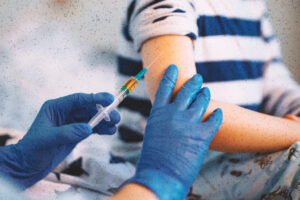By Henrylito D. Tacio
Here’s a fact not too many Filipinos know: Our country is home to about 109 million and around two million are diagnosed with psoriasis.
Another fact: The word “psoria,” which means “desquamative ailment,” was first used by Galen. Robert Willan, touted to be the “Grandfather of Dermatology,” who became the first to give a clearly-defined description of psoriasis. However, it was Ferdinand von Hebra who dissociated psoriasis from leprosy, leading to ultimate separation of the two disease entities.
Psoriasis is not a communicable disease. “It occurs when skin cells quickly rise from their origin below the surface of the skin and pile up on the surface before they have a chance to mature,” according to the Portland-based National Psoriasis Foundation (NPF) in the United States.
Psoriasis may occur in only a few days. “In its typical form, psoriasis results in patches of thick, red skin covered with silvery scales,” notes the NPF. “These patches, which are sometimes referred to as plaques, usually itch or feel sore. They most often occur on the elbows, knees, other parts of the legs, scalp, lower back, face, palms and soles of the feet, but they can occur on skin anywhere on the body.”
The NPF says the disease may also affect the fingernails, the toenails, and the soft tissues of the genitals and inside the mouth.
There are several forms of psoriasis, according to NPF. Some of these include: plaque psoriasis (skin lesions are red at the base and covered by silvery scales), guttate psoriasis (small, drop-shaped lesions appear on the trunk, limbs, and scalps), and pustular psoriasis (blisters of non-infectious pus appear on the skin).
Inverse psoriasis is smooth, red patches occurring in the folds of the skin near the genitals, under the breasts, or in the armpits. The symptoms may be worsened by friction and sweating. On the other hand, erythrodermic psoriasis is widespread reddening and scaling of the skin, which may be a reaction to severe sunburn or to taking medications. It can also be caused by a prolonged period of increased activity of psoriasis that is poorly controlled. Then, there’s psoriatic arthritis, a joint inflammation that produces symptoms of arthritis in patients who have or will develop psoriasis.
“Although the patches do not cause extreme physical discomfort, they are very obvious and often embarrassing to the person,” according to The Merck Manual of Medical Information.
Jude, who was only 15 when he had psoriasis, could never go swimming in the beach or pools with his friends. When he changed clothes, he usually closed the door of his room so that nobody could see him. “I am afraid they will find out about it.”
In accordance with Republic Act No. 7277, as amended, otherwise known as the “Magna Carta for Disabled Persons,” people living with psoriasis are considered as persons with disabilities (PWD). Although the disease is not life-threatening, the psychological distress caused by psoriasis can be severe: it may lead to significant depression and social isolation. Many people with psoriasis also have deformed, thickened, pitted nails.
If there ever was a medical condition that could convince Sherlock Holmes to get out of business, it’s psoriasis. “When it comes to psoriasis, modern medicine is absolutely inadequate,” deplores Dr. Laurence Miller, an adviser to the US National Institutes of Health.
Generally, psoriasis starts most often in people aged 10 to 40, although people in all age groups are susceptible. “Psoriasis has always been on the list of the top 20 (dermatologic) diseases in the country,” says Dr. Francisca dela Cruz-Roa, who is with the Philippine Dermatology Society. “It often appears in the late teens to adulthood. It rarely occurs in children.”
Psoriasis persists throughout life but may come and go. “Symptoms are often diminished during the summer when the skin is exposed to bright sunlight,” states the Merck manual. “Some people may go for years between occurrences. Psoriasis may flare up for no apparent reason, or as a result of a variety of circumstances.”
Speaking of flare-ups, the Merck manual states: “Flare-ups often result from conditions that irritate the skin, such as minor injuries and severe sunburn. Sometimes flare-ups follow infections, such as colds and strep throats. Many drugs, such as antimalarial drugs, lithium and beta-blockers, can also cause psoriasis to flare up.”
Until now, the cause of psoriasis is still unknown. But a problem with the immune system is thought to play a leading role. “Psoriasis is a skin disorder driven by the immune system, especially involving a type of white blood cell called a T-cell,” explains the NPF. “Normally, T-cells help protect the body against infection and disease. In the case of psoriasis, T-cells are put into action by mistake and become so active that they trigger other immune responses, which lead to inflammation and to rapid turnover of skin cells.”
The disorder often runs in families. “In about one-third of the cases, there is a family history of psoriasis,” the NPF reports. “Researchers have studied a large number of families affected by psoriasis and identified genes linked to the disease.”
There is still no cure for psoriasis. However, there are many drugs available to treat the disease. Most often, a combination of drugs is used, depending on the severity and extent of the person’s symptoms. – ###








